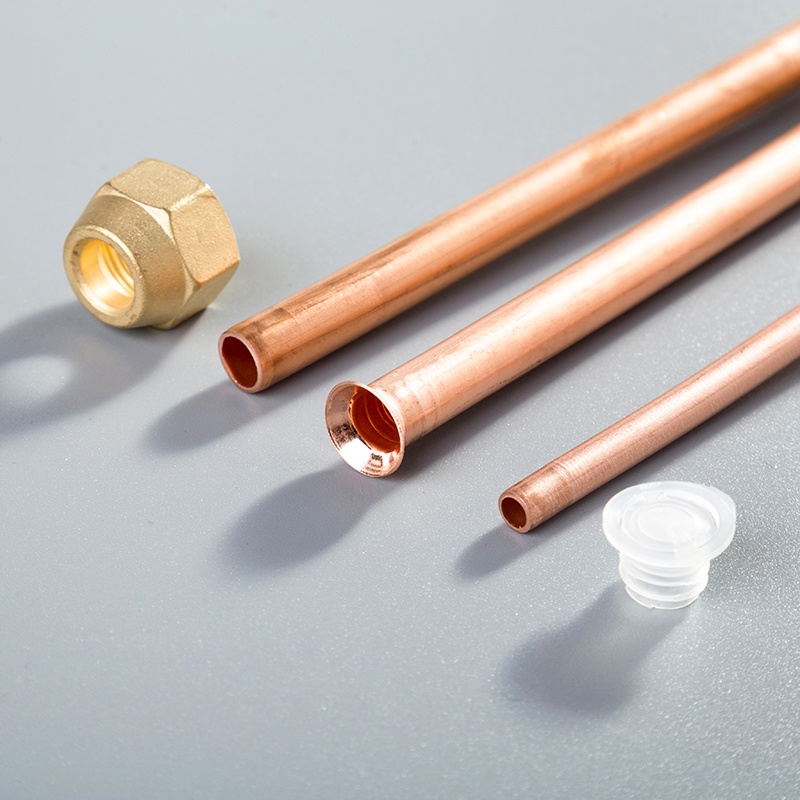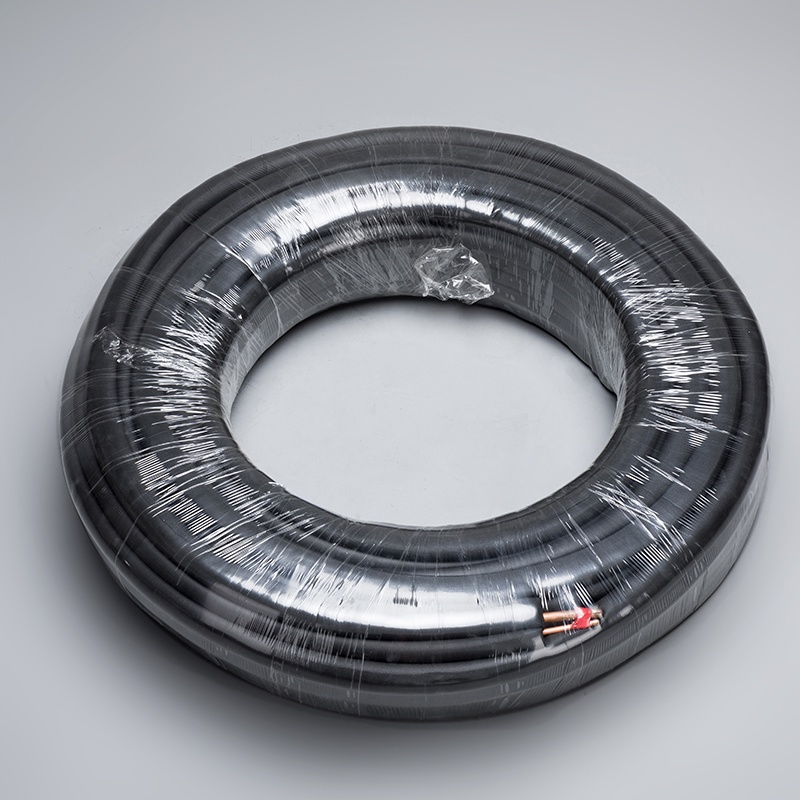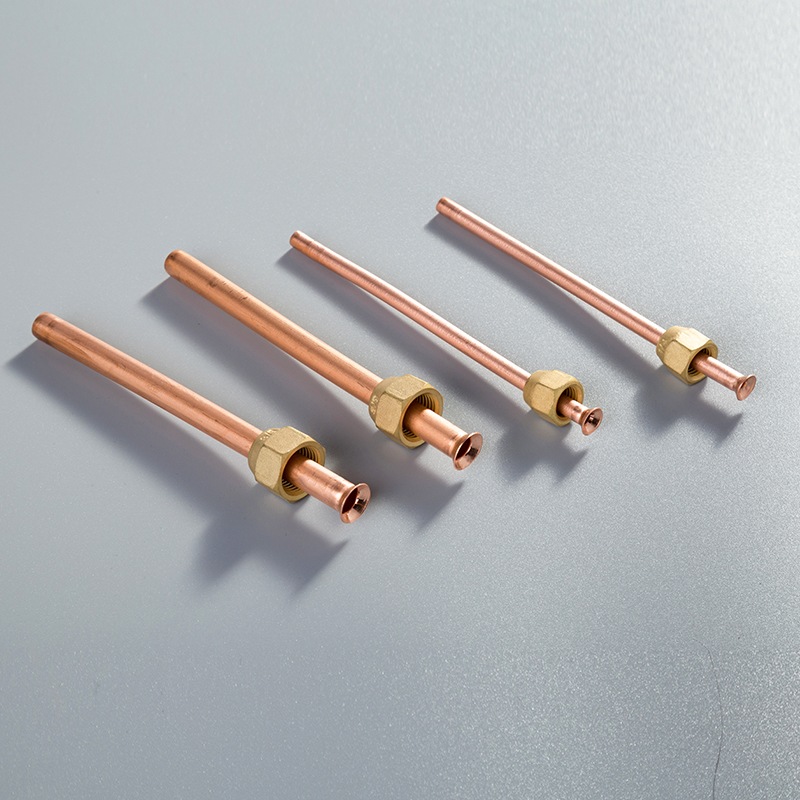What Are the Standard Sizes for Copper Pipes in Air Conditioners?

Copper pipe artwork plays a vital role in copper air conditioner systems, known for their exceptional heat transfer capabilities that ensure efficient cooling and optimal temperatures. The use of copper tubing enhances overall performance by swiftly conducting heat away from the system, contributing to lower energy bills. These pipes are renowned for their durability, corrosion resistance, and superior heat transfer properties, making them a sustainable choice for air conditioning setups. HVAC experts emphasize the benefits of sizing copper pipe, from reliability to reduced replacement costs over time. Additionally, the appropriate thermal insulation thickness is crucial to maintain efficiency and performance in these systems.
Standard Sizes of Copper Pipes

When it comes to Copper Pipes & Tubes, these cylindrical hollow tubes made of copper are essential components in various industries. For air conditioning systems, copper pipes play a crucial role due to their exceptional heat transfer properties and durability. The sizes and dimensions of Copper Pipes for Air Conditioning Systems vary, typically measured by their outer diameter (OD) and wall thickness. Common sizes include 1/4", 3/8", 1/2", 5/8", and 3/4" OD, each serving specific purposes based on the system requirements.
Common Sizes
The standard sizes for copper pipes in air conditioners range from 1/4 inch to 1-1/8 inch in diameter. These sizes cater to different needs within the system, ensuring optimal performance and efficiency. Among the common sizes used are 3/8", 1/2", 5/8", 3/4", 7/8", and even up to 1 inch, each serving a unique purpose in the air conditioning setup.
Applications of Each Size
1/4 inch: Ideal for smaller air conditioning units or refrigeration systems.
3/8 inch: Suitable for moderate cooling requirements in residential setups.
5/8 inch: Commonly used in larger HVAC systems for efficient cooling.
3/4 inch: Provides enhanced cooling capacity for commercial applications.
7/8 inch: Ideal for heavy-duty cooling needs in industrial settings.
1 inch: Offers maximum cooling efficiency for large-scale air conditioning units.
Copper Pipe Artwork
When considering Copper Pipe Artwork, manufacturers adhere to strict manufacturing standards to ensure quality and reliability. The artwork involves intricate processes that result in durable copper pipes suitable for air conditioner installations.
Manufacturing Standards
Manufacturers follow stringent guidelines to produce copper pipes that meet industry standards. These standards guarantee that the pipes are corrosion-resistant, durable, and capable of withstanding varying temperatures and pressures within air conditioning systems.
Quality Considerations
Quality is paramount when selecting copper pipes for air conditioners. Factors such as material purity, thickness consistency, and pressure ratings are crucial considerations. High-quality copper pipes ensure long-term performance and efficiency in air conditioning setups.
Factors Influencing Copper Pipe Selection
Sizing Copper Pipe
Load Calculations
To determine the appropriate copper pipe size, engineers conduct meticulous load calculations. These calculations involve assessing the cooling requirements of the air conditioning system to ensure optimal performance and efficiency. By accurately sizing the copper pipes based on load calculations, HVAC professionals guarantee that the system operates at its peak capacity without unnecessary strain.
Efficiency Considerations
When selecting copper pipes for air conditioners, efficiency considerations play a crucial role in enhancing overall performance. Engineers evaluate factors such as heat transfer capabilities, pressure resistance, and flow rates to maximize the efficiency of the system. By prioritizing efficiency during copper pipe selection, HVAC experts can design air conditioning setups that deliver consistent cooling while minimizing energy consumption.
Thermal Insulation Thickness
Importance of Insulation
The thermal insulation thickness of copper pipes is paramount in maintaining system efficiency. Proper insulation prevents heat loss or gain along the length of the pipes, ensuring that cooled air reaches its destination without unnecessary temperature fluctuations. By emphasizing the importance of insulation, HVAC professionals safeguard the integrity and performance of air conditioning systems in various environments.
Recommended Thickness
For optimal performance, manufacturers recommend specific insulation thicknesses for copper pipes used in air conditioners. The recommended thickness not only enhances energy efficiency but also prolongs the lifespan of the system by reducing thermal stress on components. By adhering to these recommendations, installers can guarantee long-term reliability and performance from air conditioning setups.
Installation Considerations

When it comes to copper air conditioner installations, following installation best practices is crucial for ensuring optimal system performance and longevity. By adhering to industry standards and guidelines, HVAC professionals can guarantee the efficient operation of air conditioning setups. Additionally, understanding and addressing common challenges during installation can prevent issues that may arise in the future.
Copper Air Conditioner
Installation Best Practices
Use proper tools and equipment for precise copper pipe cutting and fitting.
Ensure secure connections by soldering joints effectively.
Conduct pressure tests to verify the integrity of the copper pipes.
Implement adequate support structures to prevent stress on the pipes.
Follow manufacturer recommendations for refrigerant line insulation.
Common Challenges
Size Mismatch: Ensuring the matching pipe size to system requirements is essential to avoid inefficiencies.
Corrosion Concerns: Addressing potential corrosion issues through proper insulation and material selection.
Leakage Risks: Mitigating leakage risks by conducting thorough leak checks post-installation.
Vibration Problems: Installing vibration dampeners to reduce vibrations that could impact system performance.
Size
Matching Pipe Size to System Requirements
Selecting the appropriate pipe size based on cooling demands ensures efficient heat transfer.
Oversized pipes can lead to reduced velocity, affecting system performance negatively.
Undersized pipes may cause pressure drops, hindering optimal cooling efficiency.
Future-Proofing Installations
Consider using larger-than-required pipes for potential system upgrades or expansions.
Opt for high-quality copper pipes with corrosion-resistant coatings for long-lasting installations.
Regular maintenance and inspections can identify issues early, prolonging the lifespan of the air conditioning system.
Recap of Key Points:
The blog highlighted the significance of copper pipes in air conditioning systems, emphasizing their heat transfer efficiency and durability.
It discussed common sizes ranging from 1/4 inch to 1-1/8 inch, each serving specific cooling needs in various setups.
Factors influencing copper pipe selection, such as load calculations and thermal insulation thickness, were thoroughly examined.
Importance of Choosing the Right Copper Pipe Size:
Selecting the appropriate size ensures optimal heat transfer and system efficiency.
Proper sizing prevents inefficiencies like pressure drops or reduced cooling capacity.
It plays a vital role in maintaining the integrity and longevity of air conditioning setups.
Final Thoughts on Future Developments in Copper Pipe Standards:
As technology advances, copper pipe standards are likely to evolve for enhanced performance.
Innovations may focus on improving heat transfer capabilities and overall system efficiency.
Continuous developments aim to meet the growing demands for sustainable and efficient air conditioning solutions.
See Also
Benefits of Selecting Copper Tubing for Air Conditioning
The Impact of Pure Copper Tubing on Air Conditioning
Revealing the Cooling Power: Pure Copper Tubing in AC Units
Understanding Copper Tubing Dimensions: An In-Depth Overview


